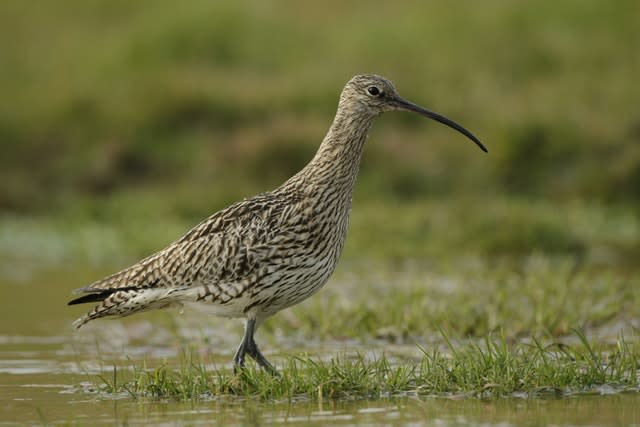The UK farms trying to reverse wildlife decline
Intensive agriculture is among the factors blamed for the steep decline in wildlife native to the UK and Ireland since the 1970s, but the Nature Friendly Farming Network (NFFN) is determined to reverse the trend.
Here are some of the farms doing their bit:
Charlie Cole, Broughgammon Farm, Moyle, Northern Ireland – “We have species-rich acid grasslands which we graze sensitively to ensure optimal conditions for plants and wildlife.
“We’ve restored a network of hedges and pockets of woodland around the farm.
“We’re in the process of establishing a farm rotation through our good fields to benefit soil health and contribute to carbon storage.”
David Lord, Earls Hall Farm, Essex – “Arable farmers are seeing huge benefits from using cover crops in between cash crops.
“In the intervening six-month period between harvesting our wheat crop and sowing our next crop, we grow a diverse mix of plant species which pulls carbon and nitrogen from the air, improves soil health and provides a great habitat for wildlife, including wading birds, lapwings and curlews.”

Sorcha Lewis, Troedrhiwdrain Farm, Mid-Wales – “We’ve planted a Ffridd habitat for the Welsh Clearwing moth, introduced fruiting trees for the wintering birds and installed a pond which is home to water voles.
“We have peat bogs which capture carbon and our stock is grass fed all year round which reduces our carbon footprint.”
Lynn Cassells, Lynbreck Croft, Cairngorms National Park, Scotland – “We take a holistic approach to farming and avoid chemicals: that means no fertilisers, no pesticides and no herbicides.
“We use regenerative grazing practices to improve the health of our soil and ensure we only have breeds that are suited to our land.”

Gethin Owen, Nant-yr-Efail, Abergele, North Wales – “We have implemented a mixed farming approach, trying to be as self-sufficient as possible.
“Growing red and white clover minimises the amount of fertiliser we need to buy and protects the soil.”
Michael Meharg, Fortfarm, County Antrim, Northern Ireland – “We’ve planted over 5km of hedges and around 1.5 hectares of woodland with 2,000 trees.
“We manage our grasslands with zero artificial fertiliser input and delay cutting to protect the Irish hare.
“Recently we’ve incorporated a 20kw solar farm to generate clean energy.”
Neil Heseltine, Hilltop Farm, north Yorkshire, England – “We have created hay meadows, which support a rich mixture of flowers and grasses and provide valuable nesting habitat for birds.
“We make sure we leave sufficient time before we mow to allow the ground nesting birds to lay eggs and give the fledglings time to fly away.
“Perhaps the most noticeable change has been the growth of plant life on the farm.
“There were plants that I didn’t even know existed until we started putting some of our nature friendly practices in place.
“These plants provide a habitat for invertebrates, allowing birds to follow. We regularly see red-listed species including curlew, lapwing and skylark.”

Polly Davies, Slade Farm, St Brides Major, South Wales – “Through the provision of overwintered stubbles for birds, red clover fields for bees and wild mouse drips for small mammals, we support farmland wildlife so it can flourish.
“The farm is organic so we don’t spray pesticides or herbicides and we reduce our impacts by managing nutrients through farm land manure and green waste.
“By managing hedgerows on a two-year cycle, the red-listed yellowhammer populations have increased significantly.”
Nick Rau, campaigner at Friends of the Earth, said: “The NFFN is showing how agriculture can help fix the climate emergency, reverse nature decline and produce high quality food. By adopting nature friendly solutions such as more trees on farms, less intensive and better quality meat and dairy we can work towards a farming system that is better for the planet.”

 Yahoo News
Yahoo News 